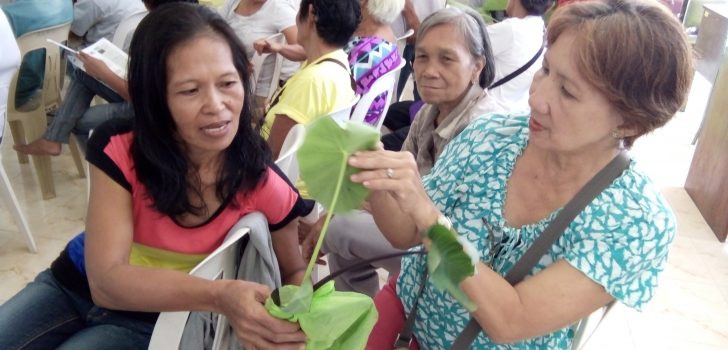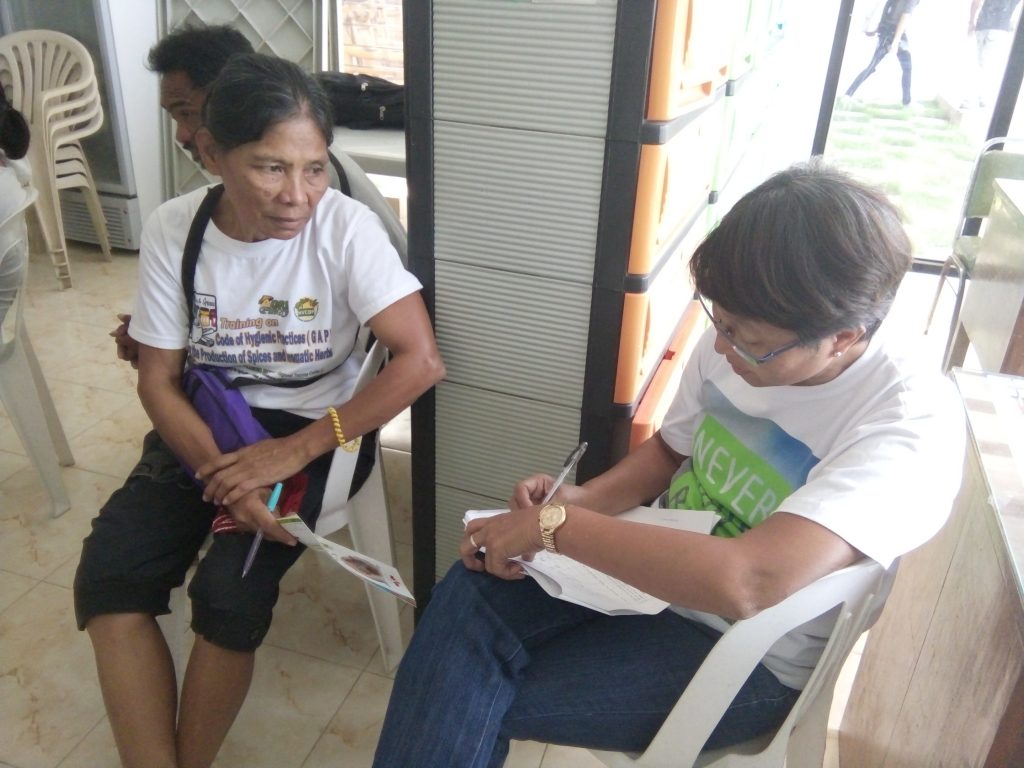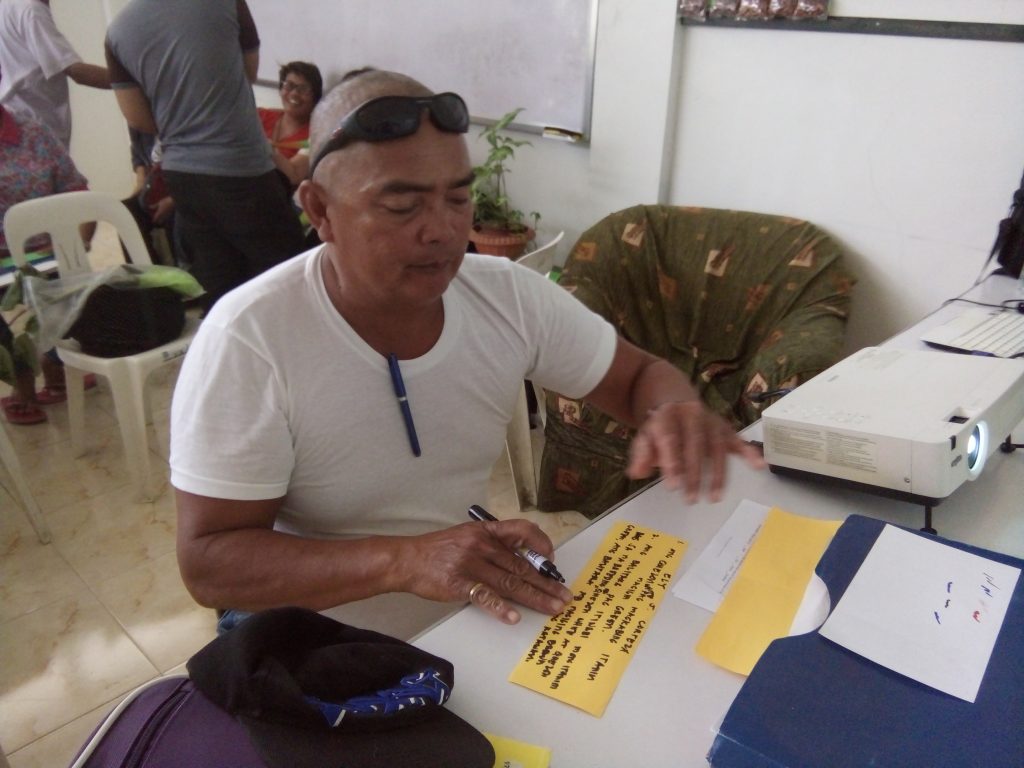 Participants of the Focus Group Discussion identifying the varieties of gabi and sharing their strategies on how to grow it. (Photo by: Michelle Angela G. Alfigura, DA-PRDP RPCO V InfoACE Unit)
Participants of the Focus Group Discussion identifying the varieties of gabi and sharing their strategies on how to grow it. (Photo by: Michelle Angela G. Alfigura, DA-PRDP RPCO V InfoACE Unit) Gabi industry players in Bicol perceived new information through FGD
Gabi is identified as one of the priority commodities of Bicol Region. It can be used both for food and medicine purposes and can be utilized from root to leaf. According to the Bureau of Agricultural Statistics, Bicol Region ranks third in producing gabi throughout the country.
It is rich in carbohydrates and most vitamins and minerals (Thiamine, riboflavin, iron, phosphorous and zinc) and good source of vitamin B6, vitamin C, niacin potassium, copper and manganese. The leaves and leafstalks are rich in vitamin C and eaten as green vegetables. The young blanched shoots obtained by growing corms in the dark have a delicate flavor similar to that of mushroom.
The corm and tubers are rich in starch, protein and good source of dietary fiber, oxalic acid especially the leaves and these foods should be eaten with milk or other foods rich in calcium in order to remove the oxalate in the digestive tract. Absorbing a large quantity of the oxalation into the blood stream poses health risks, especially for people with kidney disorders, gout or rheumatoid arthritis.

Ma. Theresa Asido doing one-on-one interview and consultation with one of the participants of the FGD for Gabi Stakeholders. (Photo by: Michelle Angela G. Alfigura, DA-PRDP RPCO V InfoACE Unit)
Gabi was once one of the most favorite root crops in the world because it is loaded with essential nutrients and vitamins, but now a days it is removed in the grocery list because many people are no longer aware of the healthy benefits of the crop.
Under the Philippine Rural Development Project (PRDP), I-PLAN had conducted series of Focus Group Discussion (FGD) with the Gabi stakeholders and key players. The FGD aimed to identify the difficulties and opportunities as well as the interventions to produce sufficient and export quality products.
The purpose of the FGD was to come up with an initial industry analysis of Gabi, through the determination of: (a) potential areas and constraints in gabi production, and (b) the industry situation particularly the marketability of gabi. During the FGD Survey Questionnaires were explained and distributed to the farmers and stakeholders to generate the data needed. The participants were encouraged to give honest answers to the questions to ensure accuracy, relevance and timeliness of the data.

One of the participants distinguishing the varieties of gabi he is growing in his backyard during the activity in the Focus Group Discussion. (Photo by: Michelle Angela G. Alfigura, DA-PRDP RPCO V InfoACE Unit)
It was facilitated by Bicol’s I-PLAN staff Kristian Escobido and Jaime Ramon Caro, assisted by Ma. Theresa Asido and Alene Gregorio from the PPMIU of Camarines Sur.
Some of the participants brought with them samples of gabi to identify the variety and the possible products that can be made out of it.
Philippine Rural Development Project is a six-year program designed to establish an inclusive and market-oriented agri-fishery sector through strategic investments in priority value chains. With funding support from the World Bank, PRDP is implemented by the Department of Agriculture in partnership with local government units and farmers and fishers organizations. (Michelle Angela G. Alfigura, DA-PRDP RPCO V InfoACE Unit)
